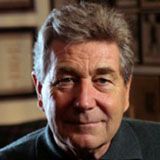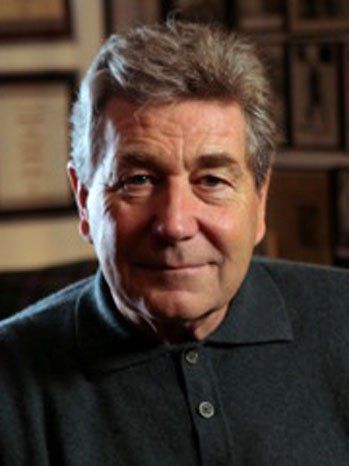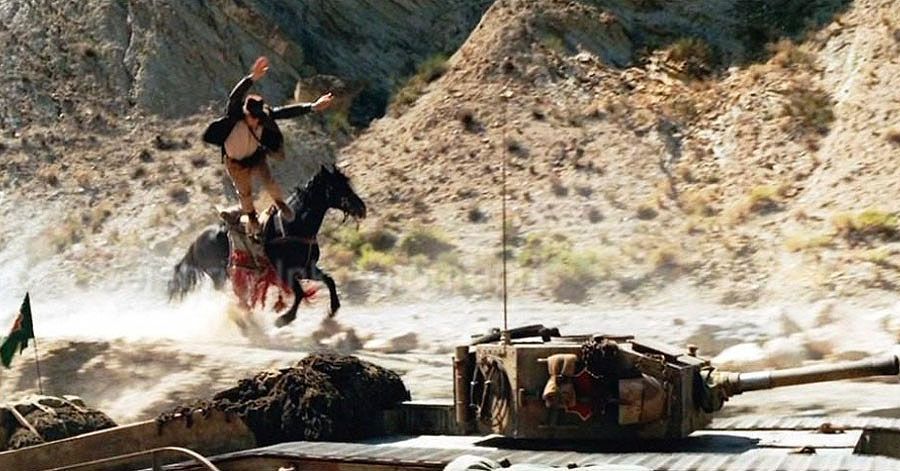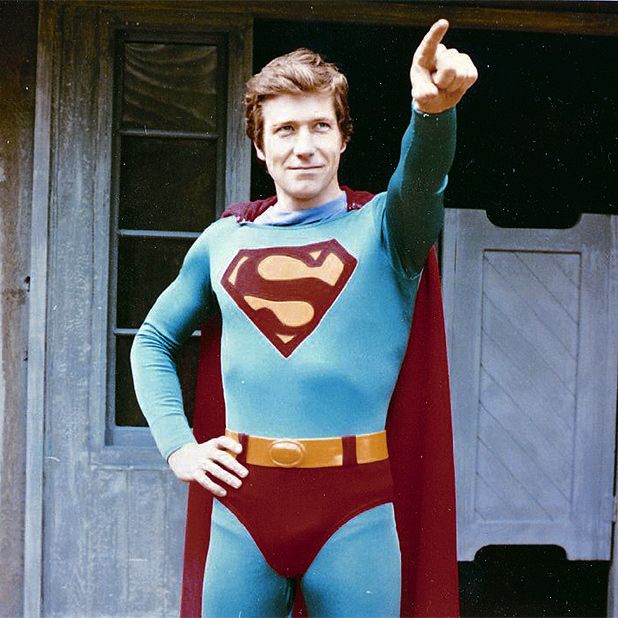Before Chris Pine could throw his first punch as Jack Ryan in director Kenneth Branagh’s Shadow Recruit, he had to learn how to do it as if he’d never thrown one before. And there’s no one better to teach him than Vic Armstrong, the legendary stuntman and stunt coordinator who’s long fought the on-screen fights for one of the actor’s predecessors: Harrison Ford.
Armstrong is a near-mythic figure in the world of Hollywood stunt work: Filling in for Ford, he cracked the whip and crashed through windows in each of the Indiana Jones films, and stepped in for the veteran actor in Blade Runner, Star Wars: Return of the Jedi and other iconic films. He’s also soared through the sky in place of Christopher Reeve as Superman and doubled for Sean Connery as 007. Today, at 67, Armstrong is one of the industry’s most sought-after stunt coordinators, having concocted the death-defying feats that made the likes of Tom Cruise, Angelina Jolie and Will Smith action heroes of the highest order.
In Jack Ryan: Shadow Recruit, which turned back the clock on Tom Clancy’s popular character, Armstrong was tasked by his longtime collaborator Branagh with transforming Pine into an unskilled fighter still able to thrillingly prevail against desperate odds. As the film makes its Blu-Ray/DVD debut this week, Armstrong declassified some of Jack Ryan’s secrets for SPINOFF.
Spinoff Online: So you actually doubled for Harrison Ford on some of the earlier Jack Ryan films of the 1990s, correct?
Vic Armstrong: A little bit, yeah. Mainly my big work with Harrison was on the Indys, of course, and another one we did in Paris, yes – I've done so many [laughs]. I've done a little bit on them, but this was my first real foray in the Jack Ryan films and the whole stylization of it all.
Tell me about what were the challenges for you working on this one, and how have things changed since they were making them 25 years ago?
Yeah, for me, the fun part and the most exciting part was the working with Ken Branagh again. I think he's a great director, and we go way back to Henry V and Thor and things like that. We get on really, really well together, and trust each other's judgments completely, so it's real good to work with him. And we sat down, we really dissected what Jack Ryan's character would be, how he would fight, stylization, and we decided he's a kid out of university: he has no special skill training; he's not a trained killer, as it were, being trained by the feds or anything like that. We thought, “Well, he could ride a motorcycle.” Just about any guy can ride a motorcycle – when you drive down a freeway, they're whizzing in and out, so we thought, “Oh, OK, you can have that as a normal person, but no sort of action, fighting, killing, murder.” Whatever he does in his fighting style is purely out of desperation and survival. Some primal instinct just kicks in trying to survive, just to make him try and survive best as he can with swimming when he gets stuck in a whirlpool or whatever. So we stylized it like that, and then we decided we'd try and shoot as much as we could in real, real action. So all the breakaways were there, the fight was there, where he smashes [the large assassin’s] head on the bidet – and we had to get one of those that was the right texture that didn’t look too easy to break at the same time, to knock him out – and that was part of the game plan. If a big man went down, we all know how hard that porcelain is, you’ve whacked a knee on one, and he slipped on the wet board, it would hurt, so everybody could relate to smacking his head and knocking the sense out of him. So giving Jack a bit of an edge again when he goes into the bath, he flips and he goes upside down, and then, of course, Jack uses most of the big guy’s weight against him and holds him underwater – things like that. And really we're going back to the old days: That's how we would have done it 20 years ago as well. So it's a nice change to be able to do it like that and not have some unbelievable sort of movements or whatever that's been computer-enhanced, because there's no need for it in this one.
With well over a 100 film credits as a stunt player and coordinator, where does inspiration come from now? Do you still find yourself quickly coming up with fresh, stunt scenarios that you can't wait to put together?
I like to read the script, and when I read something, I suddenly get a picture in my head. I can see things, and then I start looking around for locations for it to happen in. And the locations speak to me, and they give me ideas and things like that. Everything is sort of spontaneous, but also organic. And it's born by the script. Therefore, you have a certain original to – each script has its own originality. […] I just like to look at each one as the first time I've ever done it and, “Wow, what would be exciting in this location? What's the location telling me what to do?” And I just get inspiration like that.
At this stage of your career, how often do stunts come around where you really want to put your stuntman hat on and do it yourself? Is it still fairly frequently?
No, not at all! I've got four children that do it, I've got a brother that does it and I've got two nephews that do it. And when I shot Green Hornet, it's terrifying – my youngest son did a head-on in a pickup truck to the front of a bus that never stops and is on fire. And it's nerve wracking [laughs], so I wouldn't want to do it and I wish they weren’t doing it! But you still get a kick out of it when it turns out well. But it's nerve wracking, yeah.
With your contribution to so many landmark films in the action genre, essentially playing characters like Indiana Jones, Superman and James Bond in their action sequences, are those the types of things you were a big fan of to begin with? Were you living out a dream to stage stunts for these characters, or was it a job that you just had a very special aptitude for?
A hundred percent, I always loved that sort of movie. It was a dream when I was a kid, and at 8 or 9 years old, I galloped along on my pony and playing cowboys and Indians on my own. I loved that sort of thing. I love that genre, and I was lucky enough to hit my peak when that genre came out again. It's been around before, on the Saturday-morning specials and all that sort of thing, and the John Wayne days and the John Ford days. But I was lucky enough to be at my peak – my physical peak and popular employment peak, if you like – when they became popular again, from Superman to Bond to Indiana Jones. They're three wonderful genres that I happened to be in the right place at the right time for, and I just picked the subject up. It was just absolutely what I wanted. With Indiana Jones, I couldn't be more happy: I loved the clothes, I loved the period, I loved the action with the rightful blend of humor. Real stunts, enhanced stunts a little bit with computers – not very, very much at all. I think it's a perfect way to make movies. I did that with Jack Ryan: As Indiana Jones was, he's a professor – obviously, you stretch it a bit more with Indiana Jones, but Jack Ryan was this guy out of college, and everything happens around him. And he does the right thing at the right time, and you get out of it with barely any training. And I love that sort of movie action.
You've worked with so many terrific actors over the years. Did you get to give Chris Pine a chance to test how far he could go, stunt-wise?
Well, a hundred percent Chris did everything there. We had stunt doubles during driving and things, but Chris did the fights. He was an absolute trooper, and he came on the show full of admiration for me, because he knew of me from everything else, and he was absolutely wonderful to work with. He'd hardly ridden a motorbike before, so I said, “Look, you have to be serious about this ...” I put Lee Morrison on as his stunt double – he did all that stuff on the last Bond on the rooftops, jumped over the rooftops in Turkey and jumped through the window – and he’s an excellent motorcyclist. Lee taught him in England, and then Chris had to go back to the States so I set up a training regime at Dodger Stadium with my brother and Gary Davis – who funnily enough, doubled Chris Pine's dad [Robert Pine] in CHiPs, so it’s quite a full circle! But he stuck to it, and he went out and he trained every day with absolute professionals, and that's why we could let him loose roaring in New York without a helmet on – which is a hell of a risk, you know: it was one of the first single shot of the movie. It's like, “OK, put all your eggs in one basket and try not to drop it!” And the fight scenes were great. He rehearsed, and he worked it out. He even cracked a bone in the tip of his finger during one of the fights because he threw a punch and strained his finger. I heard a crack and he screamed and went down; a few second later he got up, finished the night's work and went to hospital and had an X ray, came back and said “Vic, you’re going to find this funny: I was so pleased when they said ‘You've broken your finger,’ because I knew you'd think I was a wimp if I'd just sprained it.” And he came back and carried on the next day. He's absolute a real good guy. I've got more than admiration for him. He was fantastic.
Your directing career is also kicking into high gear. Fill us in on what's happening with your directorial projects.
Yeah, I'm having a great time. We're just finishing post [production] on Left Behind with Nicolas Cage, which is going to be a great movie, I think. It comes out October the third. It's based on the books – it’s sold 65 million copies, so it's got quite a few followers [laughs]! So I think it's going to turn a few heads. It's a really nice story, and it has a religious undertone to it, but it's a good crossover movie because the story carries. And I'm starting this Friday on a film in Atlanta called Sunday Horse, which is a work of passion for me because it's about a young girl who's a good rider, but she doesn't have the money to buy the championship horses. And she gets a mentor who talks her in to buying a good, cheap horse, and she in fact buys two, and she qualifies, and one of them wins the double gold in the Olympics – the only time it's ever been done, and she was named female athlete of the Olympics – and the other one goes on to win the American championships, so it's based on a true story. I've got William Shatner and Ving Rhames and Linda Hamilton – I've got a great cast. Not a huge budget, but again, it's a great story. And I'm trying to pick movies for that reason alone.





